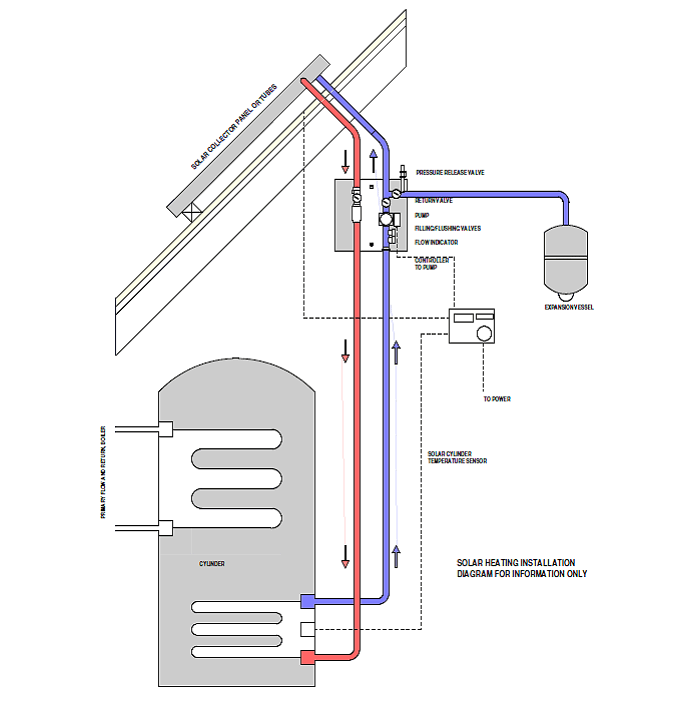Sustainable Energy
Sustainable energy is a vast subject to cover and you should investigate all forms and sources prior to making a decision. Generally in domestic situations, Blueprint Home Plans advise that you should incorporate all or some of the following as part of your proposal to construct a new house.
(1) Solar water heating to supplement your primary heating system.
(2) Rainwater collection and treatment systems.
(3) High levels of thermal insulation in the building fabric.
(4) Ventilation to incorporate heat recovery.
(5) Draught porch at the main entrance.
(6) Ground source pumps.
(7) Enclosed stoves in fireplaces.
The Building Regulations demand that certain levels of sustainable energy systems be employed during the construction of your new home, our web book will regularly expand our section on sustainable energy and Blueprint Home Plans incorporate the required specification to satisfy the Building Regulations.
Solar technology has many applications including heating, lighting, space heating, water treatment, cooking and generation of electricity to name but a few. Generally, in domestic planning solar technology is harnessed to heat water. In using solar energy to heat domestic water the common types of solar water heaters are evacuated tube collectors and glazed flat plate collectors. Simple to install, the system will provide supplementary water heating where the collectors are located on a South or South West facing roof. The diagram sets out the normal components used in diagrammic form.
Solar panels.
Two types of solar panel are available, evacuated tubes and flat panels. The principal operation for both is the same, energy from the sun is held in the panels and as the solution in the panels passes through it is heated and sent through, a coil in an insulated storage cylinder. The heat in the coil transfers to the water in the cylinder. The heat in the cylinder is boosted if necessary by the primary heating system. Solar panels will provide up to 60% of the hot water demand depending on the design and installation of the solar system.
Although performance is reduced in winter weather conditions a reasonable heat output can still be achieved. The cylindrical shape of evacuated tubes suggests that sunlight absorption is more efficient than the flat panel type of collector. The tubes are robust in construction and if one tube is damaged the remainder will continue to work. It is possible to replace a tube without having to drain down the entire system. The system requires minimal maintenance. Grants are available and you can contact SEAI at www.seai.ie. The solar collection panels are most efficient when installed at an angle between 35-48 degrees.

Heat pumps.
A highly efficient process and it is suggested, up to 60% less expensive than oil or gas. There are different collector types and each system must be designed on a site specific basis. If this approach is not taken, the result will lead to increased running costs and a reduction in the life span of the system.
The most common system employs horizontal collection pipes but this is sustainable only for larger sites. The available range of pumps would include geothermal, air to water, air to air and exhaust air pumps. There are differing collector types in addition to horizontal type, and the least technical way to describe them would be vertical, open loop and closed loop. A vertical collector is where a well is drilled in the ground and a probe is installed. Heat transfer takes place in the well. This method is used when space is limited. The open loop is used to where water is extracted from a river or well and returned once the energy is removed. Needless to say that flow rates are high, the water is impure and filtration is necessary. A closed loop is where a liquid is circulated through pipes in the ground where it collects heat. The geothermal heat pump is used to provide space heating with radiators or underfloor heating and hot water production. Air to water heat pumps extract energy from the outside air and would be an ideal solution for existing houses. They can be connected to oil or gas systems. The air source heat pump has a quiet external unit and an internal distribution unit. The internal unit distributes the heat generated by the external unit to the heating and hot water systems.
Heat recovery ventilation.
Given the high level of insulation designed into our dwellings to reduce heat loss through the fabric, the result leads to retention of water vapour and possible reduction of air changes within the building. A heat recovery ventilation system will considerably reduce humidity to acceptable levels, continually removing moist stale air and replacing it with fresh pre-heated air; while reducing energy requirements.
Rainwater harvesting.
In the past, rainwater storage was confined to a collection barrel under the rainwater pipe. Of course it made sense at the time. Systems to collect and re-use rainwater have become more sophisticated and efficient. An underground storage tank collects the rainwater which in turn is pumped to the house following various filtration stages including UV disinfection. These systems, where technically designed can provide water for showers, toilets, baths, wash basins and the washing machine. Primary storage will provide water for the garden and car washing. A further incentive will be the introduction, in the near future, of a metered public water supply.
Renewable power.
Depending on location and orientation you could consider having solar PV panels and an energy and micro-generator device. In specific locations a wind turbine would be acceptable, but you need to consider planning implications. This type of technology is relatively complicated and new, so as in all cases of specialist design, take the best advice available.